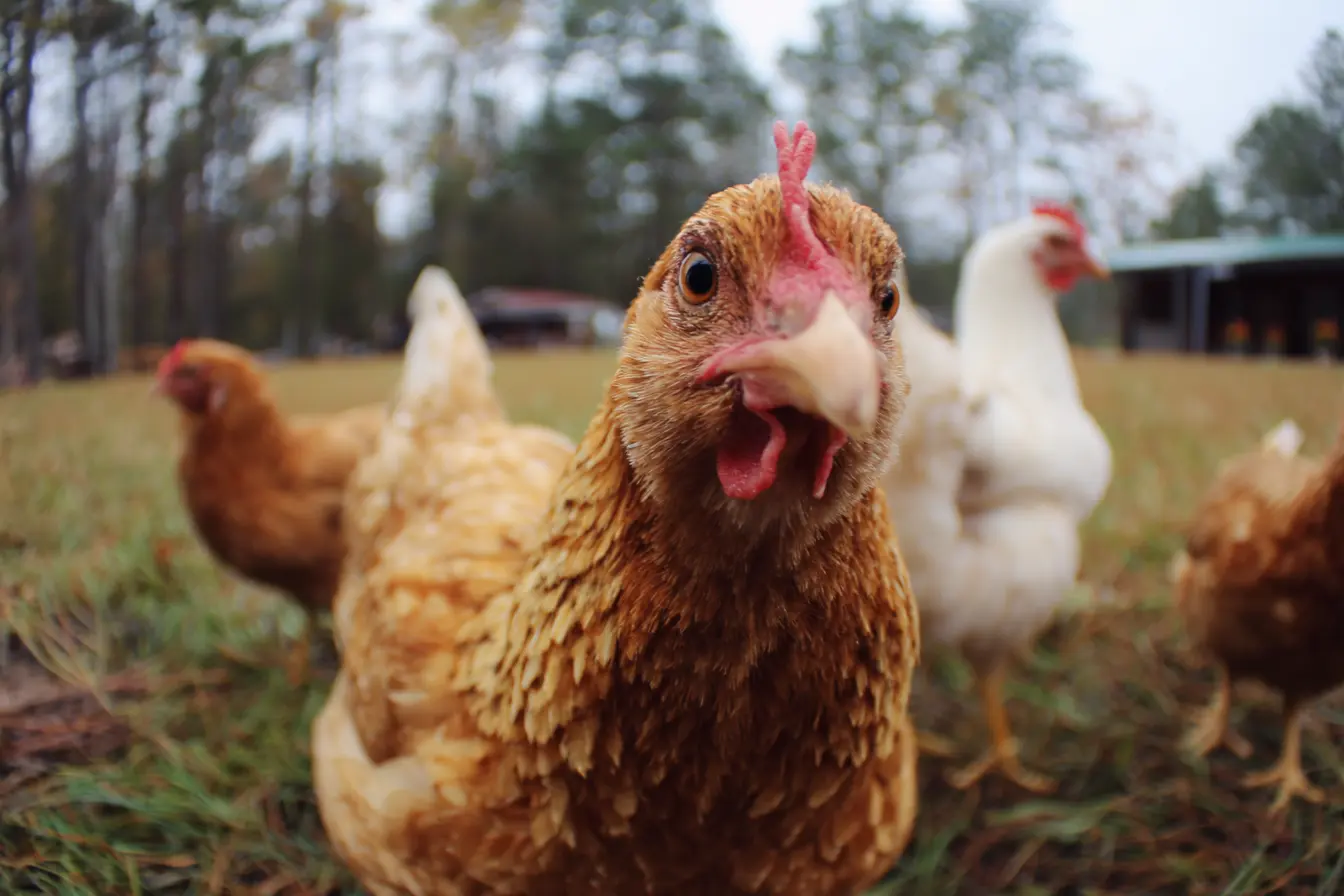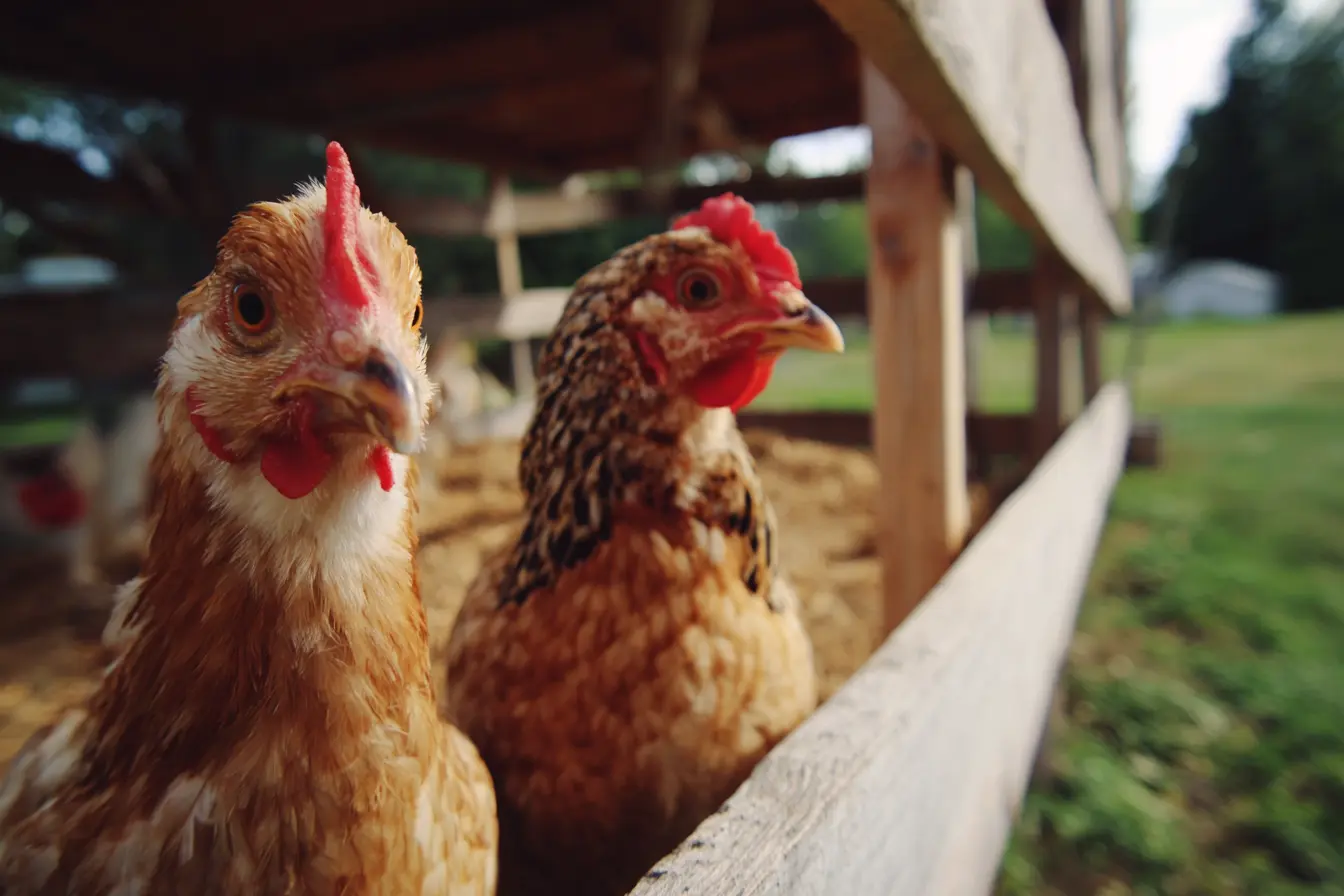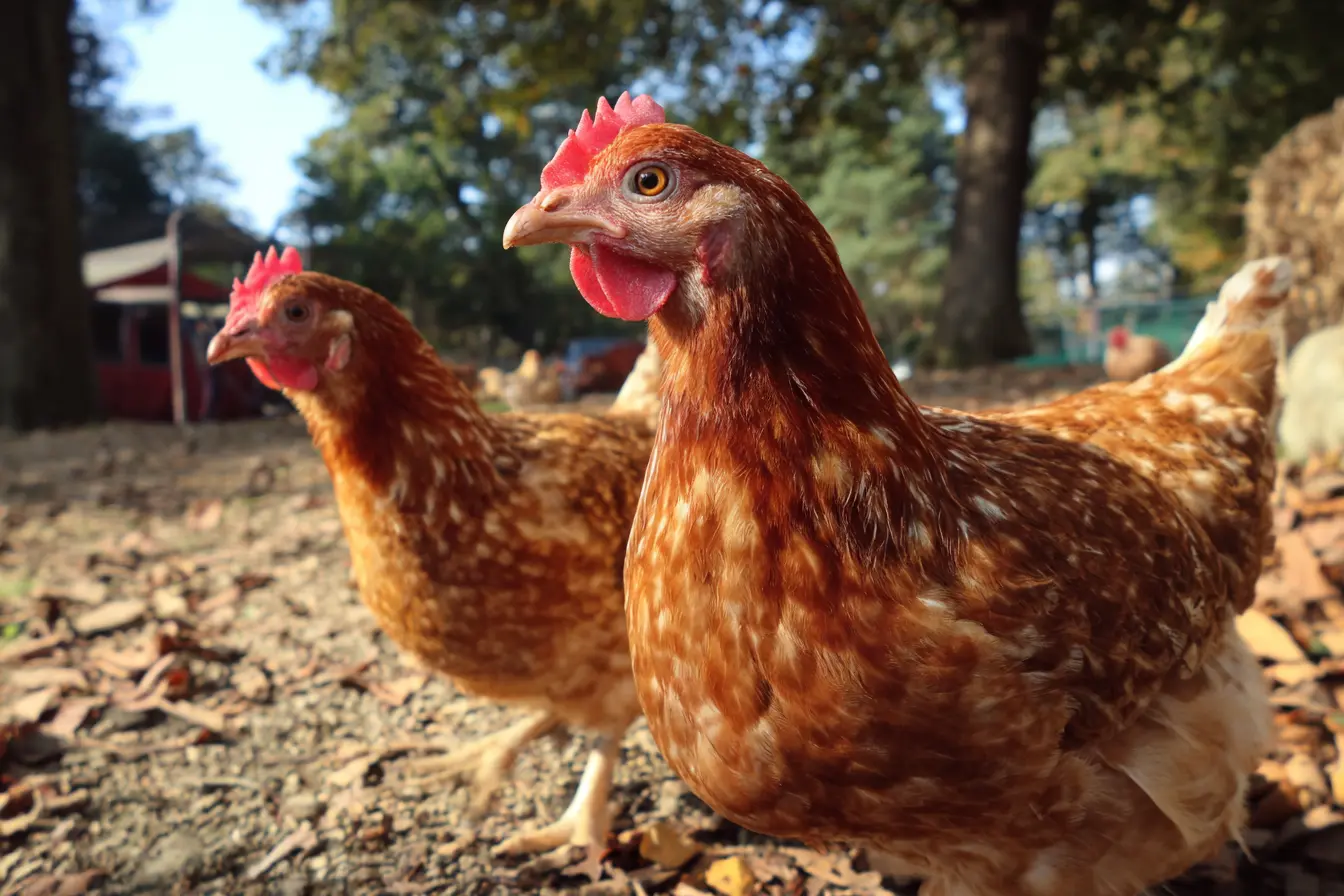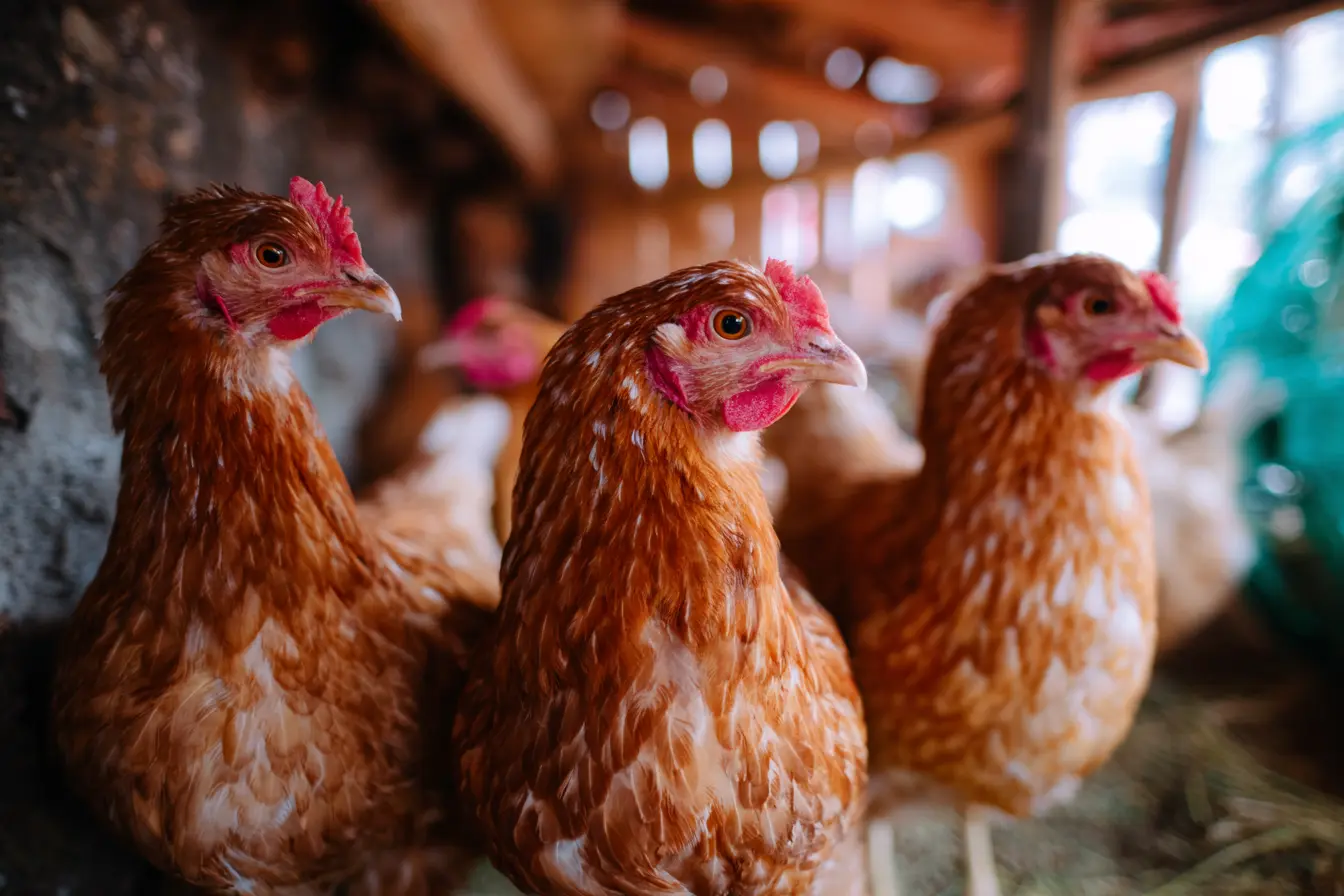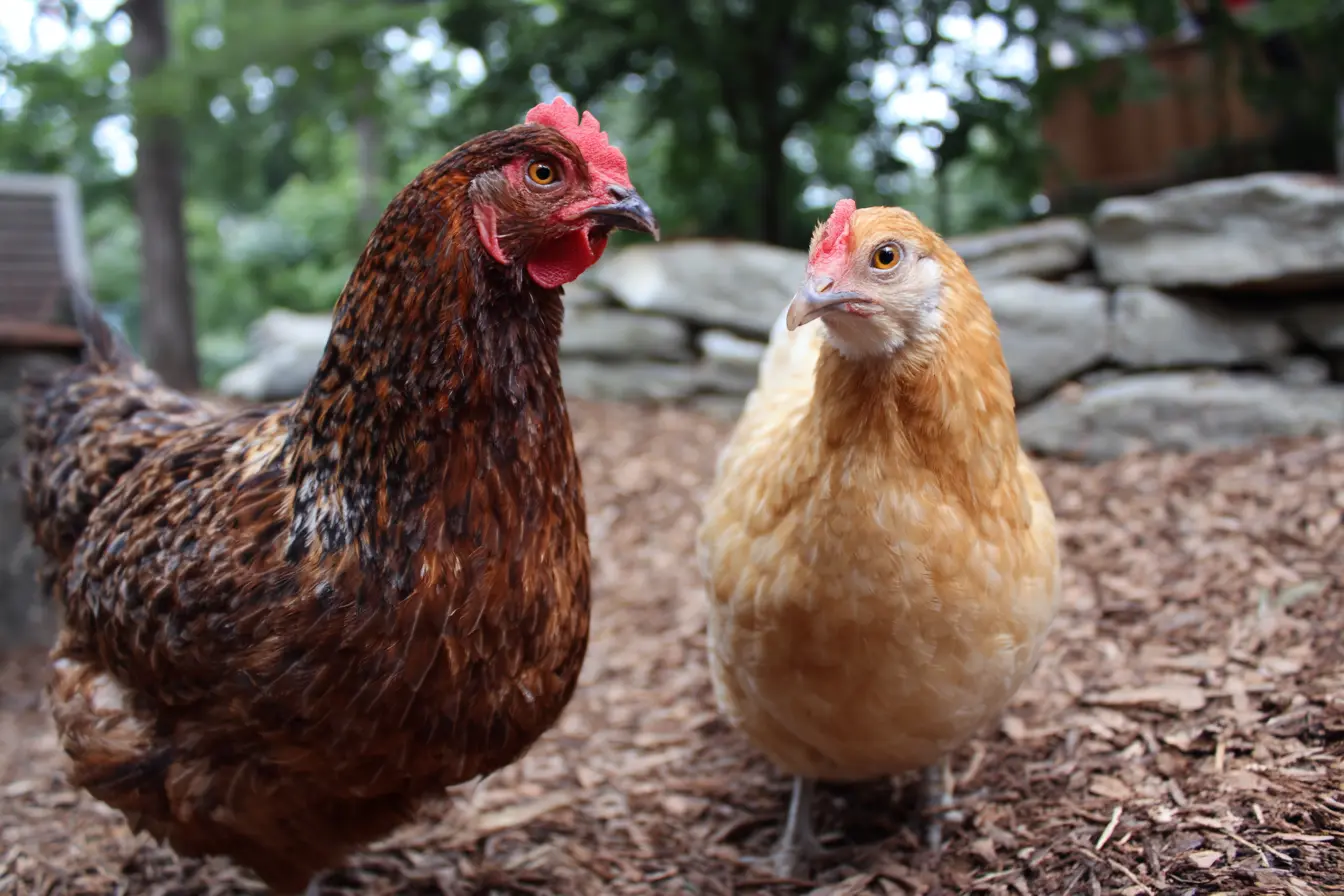
Crop Impaction in Chickens
Crop impaction, or impacted crop, is a common but potentially serious condition in chickens where the crop fails to empty properly. This can lead to discomfort, poor digestion, nutritional deficiencies, and in severe cases, death. In this guide, we will cover everything you need to know about crop impaction: what it is, its causes, signs, treatment, prevention, and aftercare.
What is the Crop?
The crop is a part of a chicken's digestive system – a muscular pouch located on the right side of the lower neck. It acts as a temporary storage space for food before it continues through the rest of the digestive tract.
After a chicken eats, food travels down the oesophagus and into the crop, where it is softened and partially digested before moving into the proventriculus (true stomach) and gizzard.
Normally, the crop empties overnight. If it doesn’t, the bird may be suffering from an impacted or otherwise compromised crop.
What is Crop Impaction?
Crop impaction occurs when the crop becomes blocked and cannot pass its contents further along the digestive tract. The food builds up, ferments, and may become compacted into a hard mass, making it difficult or impossible to digest.
If not treated promptly, crop impaction can lead to:
- Malnutrition
- Dehydration
- Crop infection (sour crop)
- Necrosis of crop tissue
- Death
Causes of Crop Impaction
Several factors can contribute to the development of crop impaction:
- Long or tough grass: Particularly dry, fibrous vegetation that is hard to break down
- Foreign objects: String, straw, plastic, or bedding materials accidentally ingested
- Overeating: Sudden gorging on grains or fibrous feed
- Poor gizzard function: Prevents proper grinding of food, leading to backup
- Dehydration: A lack of water slows digestion and impedes crop emptying
- Lack of grit: Grit helps mechanically break down food in the gizzard
- Internal parasites: Worms may cause digestive sluggishness
- Other health conditions: Neurological or metabolic disorders may impair motility
Symptoms of an Impacted Crop
Signs of crop impaction may include:
- Noticeably full or hard crop in the morning (it should be empty after a night of fasting)
- Swollen or distended crop
- Lethargy or depression
- Loss of appetite or reduced food intake
- Weight loss or poor body condition
- Reluctance to move
- Frequent stretching of the neck or shaking the head
- Foul-smelling breath (if sour crop develops)
- Regurgitation or fluid from the beak
Diagnosing Crop Impaction
Diagnosis is usually based on physical examination. Gently feel the crop:
- A healthy crop will be full after eating but soft and empty by morning
- An impacted crop will feel firm, doughy, or hard and persistently full
Veterinary confirmation may involve:
- Palpation of the crop
- Radiographs or ultrasound (in severe or uncertain cases)
- Endoscopy to visualise the contents of the crop
Treatment of Crop Impaction
Early intervention increases the chances of successful recovery. Treatment options include:
Withholding Food
- Remove feed for 12 to 24 hours (but not water) to allow the crop time to empty
- If the crop empties, gradually reintroduce soft, easily digestible food
Massage
- Gently massage the crop several times a day to help break up the contents
- Work from the bottom upward to encourage movement
- Never squeeze forcefully as this can cause regurgitation and aspiration
Hydration and Oil
- Offer fresh water frequently
- Administer a small amount of vegetable oil or coconut oil (2–3 ml) via dropper or syringe to help soften the impaction
- Continue massage after oil administration
Crop Emptying (Under Veterinary Guidance)
- If conservative methods fail, a vet may use a crop needle to flush the crop with warm saline
- In extreme cases, surgical removal of the impacted material may be required
Antibiotics or Antifungals
- If sour crop or secondary infection is present, your vet may prescribe medications
Isolation and Supportive Care
- Isolate the affected bird to monitor food intake, droppings, and general health
- Provide a warm, stress-free environment and easy access to clean water
Difference Between Impacted Crop and Sour Crop
While related, these conditions are different:
- Impacted crop: Caused by a physical blockage
- Sour crop: A yeast (Candida) overgrowth in the crop, usually a result of prolonged impaction
A sour crop feels soft and squishy, may produce a sour smell, and can cause regurgitation. It may also require antifungal treatment.
Prevention of Crop Impaction
Preventing crop impaction is far easier than treating it. Good management practices include:
- Avoid long, fibrous grass: Keep pastures trimmed or limit access to long grass
- Provide grit: Especially for birds on free range or mixed diets
- Offer clean, fresh water at all times
- Avoid access to string, hay twine, hair, or plastic in the run or coop
- Feed a balanced diet appropriate for the age and type of bird
- Control internal parasites with regular worming if necessary
- Encourage natural foraging behaviours to promote healthy digestion
Recovery and Aftercare
Recovery from crop impaction depends on the severity and how early treatment is administered. Once the crop has cleared:
- Feed small amounts of soft, easily digestible food like soaked pellets or scrambled egg
- Monitor crop function closely for recurrence
- Gradually reintroduce normal feed
- Continue supportive care for several days to aid digestion and healing
When to Seek Veterinary Help
Contact a vet if:
- The crop does not improve after 48 hours of treatment
- The bird is unable to eat or drink
- You suspect foreign material or severe blockage
- There are signs of sour crop or infection
- The bird becomes increasingly lethargic or distressed
Key Takeaways
- Crop impaction occurs when the crop cannot empty properly due to blockage
- Causes include long grass, foreign objects, dehydration, and dietary issues
- Symptoms include a persistently full crop, lethargy, and poor appetite
- Treatment involves massage, hydration, and sometimes veterinary intervention
- Prevention relies on good husbandry and attention to diet and environment
Final Thoughts
Crop impaction is a serious condition, but with attentive care and timely intervention, most chickens can recover fully. By maintaining a safe environment, offering a balanced diet, and observing your flock daily, you can help prevent this uncomfortable and dangerous condition from developing in the first place.
Contents
- What is the Crop?
- What is Crop Impaction?
- Causes of Crop Impaction
- Symptoms of an Impacted Crop
- Diagnosing Crop Impaction
- Treatment of Crop Impaction
- Difference Between Impacted Crop and Sour Crop
- Prevention of Crop Impaction
- Recovery and Aftercare
- When to Seek Veterinary Help
- Key Takeaways
- Final Thoughts
Tags
Vets near you
Speciality vets
- Aquatics vet specialists
- Birds vet specialists
- Camelids vet specialists
- Cats vet specialists
- Cattle vet specialists
- Deer vet specialists
- Dogs vet specialists
- Equines vet specialists
- Exotic vet specialists
- Goats vet specialists
- Pigs vet specialists
- Poultry vet specialists
- Sheep vet specialists
- Small Mammals vet specialists
- Wild vet specialists
